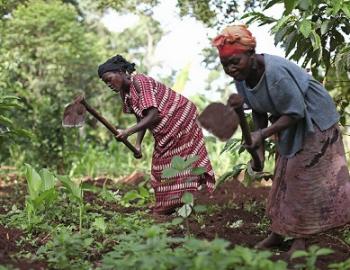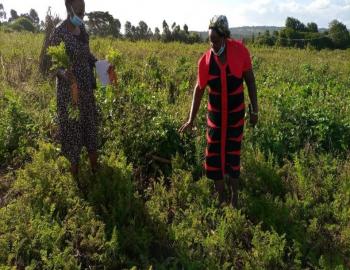Infographic: Climate risks and opportunities in the grain value chain
Infographic: Climate risks and opportunities in the grain value chain
As part of the CDKN-funded project, Mitigating the effects of climate change on grain quality and post-harvest losses in East Africa, the Eastern Africa Grain Council (EAGC) co-produced an infographic on the climate risks and opportunities in the grain value chain.
The information in the graphic is based on input captured from a scoping workshop and a survey of EAGC’s farmer groups. Contributors included input suppliers, farmers, traders, processors, warehouse operators, financial institutions and insurance service providers. After capturing this information, EAGC, in partnership with CDKN, created an initial value-chain infographic which was presented during a session at the African Grain Trade Summit in October 2019. During this session, further input was captured from Kenyan government representatives, climate information producers as well as industry representatives from the East Africa Region.
The infographic is the cumulation of this work and reveals some interesting insights:
- The majority of risks for farmers are directly linked to weather changes, which can directly impact the supply of grain.
- There is a strong co-dependency between various stakeholders as one progresses along the value chain. Millers, traders and wholesalers are all dependent on receiving good quality grain and at a consistent quantity from farmers.
- Poor-quality grain, or reduced supply of grain, increases the retail price of grain which affects the food security of the end consumer.
- Since all of the stakeholders are affected by the grain production of farmers, they should collaborate to minimise the effects of changing weather events, as forecasted by climate change.
- During high-crop seasons, farmers should be able to store their harvested grains and sell them at a later date. This would ensure consistency of supply throughout the value chain, and consistency of income for the farmers. This would also reduce uncertainty for financiers, which would reduce the cost of credit and insurance.
- Buyers of grains from farmers can collaborate to support farmers in post harvest management and storage.
- Since some areas are generally more affected by extreme weather events, government should promote interdependency between areas, and even countries, when it comes to the supply of grain. By diversifying the production of grain across the East African Region, the risk of reduced supply for any one country is minimised.



